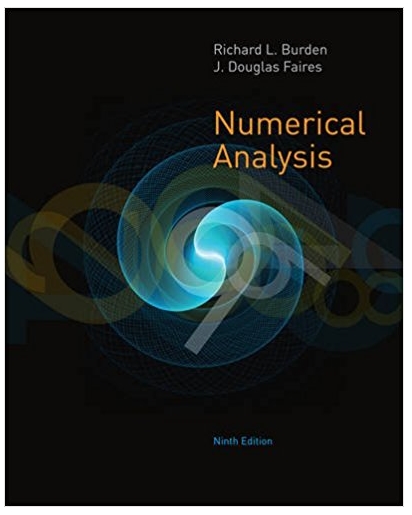Answered step by step
Verified Expert Solution
Question
1 Approved Answer
1: There are 4 buses carrying 40, 33, 25, and 50 students who are going to a student conference. A student can be uniformly randomly
1: There are 4 buses carrying 40, 33, 25, and 50 students who are going to a student conference. A student can be uniformly randomly chosen from the 148 total students. A driver can also be chosen uniformly randomly. Let X and Y be two random variables defined as follows: X : Number of students in the bus of the selected student Y : Number of students in the bus of the selected driver What do you expect to be higher: E[ X ] , or E[Y ] ? a) Stretch the problem and think of an extreme case (obviously with a different number of buses and students in them) such that the answer can be found convincingly but intuitively, i.e., without actually solving for the expectations. b) Do it mathematically and see if the actual answer matches your intuition or not. Problem 2: A game of chance is played by 10 players and consists of playing two rounds. All the players play both of the rounds. The outcome of each round is one prize each of $1, $2, and $4. If a player does not get a prize in any round, he has to pay $1 to the club. What should I expect to walk back with, after playing 10 such games? [Note when we say 'a game' it includes two rounds.] Problem 3: Two FYP groups at FAST are using the same data but they are using different units. Will the two groups see the same PMF? If not, how are the two PMFs related? Problem 4: Imagine an audio amplifier contains six transistors. Harry has been told that two transistors are defective, but he does not know which two. Harry removes three transistors at random and inspects them. Let X be the number of defective transistors that Harry finds, where X may be 0, 1, or 2. Find the PMF for X . Problem 5: Two people, Rana and Malik, independently flip similar unfair coins, with p being the probability to get a head. Suppose random variable R represents the number of flips Rana did to get a head and M represents the number of flips Malik independently did to get a head. Prove that Pr ( R=i| R+ M =n= 1 , for i=1,2, ... , n1 n1 Note that R was a geometric RV but under the condition, it became a uniform RV (as the conditional probability does not depend on i ). Can you describe in your own words, why would this be so? Problem 6: Roll No: _____________ After an exam, a teacher starts checking student attempts. Based on the marks he gives, he also awards a letter grade from any of the 6 letter grades; A+, A, B, C, D, and F. How many papers on average should he expect to check to see all 6 grades awarded? At the end, generalize, your results for k - letter grades. Problem 7: A certain light bulb manufacturer makes two types of bulbs, a low-cost short-life (S-type) bulb and a more expensive long-life (L-type) bulb. The two types of bulbs look identical and so the company must be sure to carefully label the boxes of bulbs. A box of bulbs is found on the floor of the manufacturing plant that (you guessed it) has not been labeled. In order to determine which types of bulbs are in the box, a promising young engineer suggested that they take one bulb from the box and run it until it burns out. After observing how long the bulb remains lit, they should be able to make a good guess as to which type of bulbs are in the box. It is known that the length of time (in hours), X, that a bulb lasts can be described by a geometric random variable k P X ( k ) =( 1 - a ) a , k =0,1, 2, ... The parameter a that appears in the above expression is a=0.99 for the S-type bulbs and a=0.999 for the L-type bulbs. It is known that of all the light bulbs the company manufactures 75% are S-type and 25% are L-type. Hence, before the experiment is run, the box in question has a 75% chance of being S-type and 25% chance of being L-type. (a) If, after running the proposed experiment, it is observed that the bulb burned out after 200 hours, which type of bulb is most likely in the unmarked box? Mathematically justify your answer. (b) What is the probability that your decision in part (a) turns out to be wrong? That is, if you decided that the box most likely contained L-type bulbs, what is the probability that the box actually contains S-type bulbs (or if you decided the box most likely contained S-type bulbs, what is the probability that the box actually contains L-type bulbs)? NUCES-FAST ISB: SPR'16: EE319: PRP Assign # 04 Page 2/2
Step by Step Solution
There are 3 Steps involved in it
Step: 1

Get Instant Access to Expert-Tailored Solutions
See step-by-step solutions with expert insights and AI powered tools for academic success
Step: 2

Step: 3

Ace Your Homework with AI
Get the answers you need in no time with our AI-driven, step-by-step assistance
Get Started


